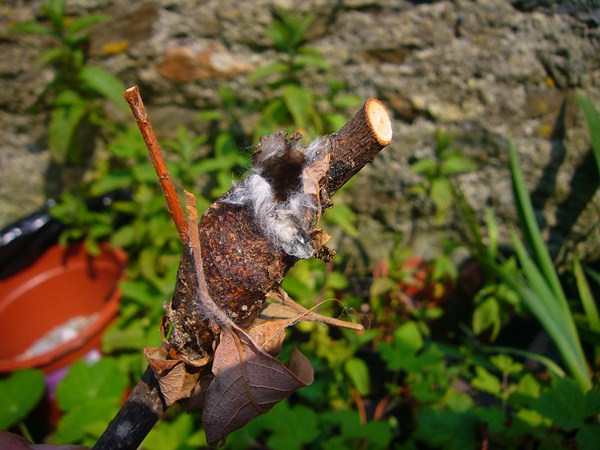The news broke yesterday that Giselle's ringing trainer had caught and ringed yet another MEGA, this time in the form of a Western Orphean Warbler (well done Chris!). So we were faced with the uncomfortable indecisiveness of whether to traverse the country (again), in the hope that it would stick around long enough for us to see it, or to remain faithful to the Bardsey patch. Luckily, we didn't have to make the decision as the warbler was not seen today and the news from Nant was that of a Bee-eater! Luckily Rich was nearby and got on it immediately, but I (Giselle) was birding the gorse at the opposite end of the Island. It was observed flying South across the Island towards the farm, so that's where we gathered. Then the news came that it was back at Nant! So we ran. I (Giselle) don't usually run. It was a battle of both mental and physical strength, but we got to Nant just in time to see it fly around the northern edge of the mountain.
It came back quickly and we could hear it calling from the Maritime Heath. Then a Peregrine was observed swooping down over where we heard the calls. Then, silence, with good views of a Peregrine carrying an unidentified bird over the mountain. Did it survive? Did the Peregrine opt for an unsuspecting Wheatear? We'll never know! The only previous Bardsey record came in the July of 1984. (c) Richard Brown
.JPG)

.JPG)
.JPG)
.JPG)
.JPG)
.JPG)
.JPG)
.JPG)













.JPG)
.JPG)
.JPG)
.JPG)
.JPG)
.JPG)
.JPG)
.JPG)
.JPG)
.JPG)
.JPG)
.JPG)
.JPG)
.JPG)
.JPG)
.JPG)
.JPG)
.JPG)
.JPG)
.JPG)
.JPG)
.JPG)
.JPG)
.JPG)
.JPG)
.JPG)
.JPG)
.JPG)